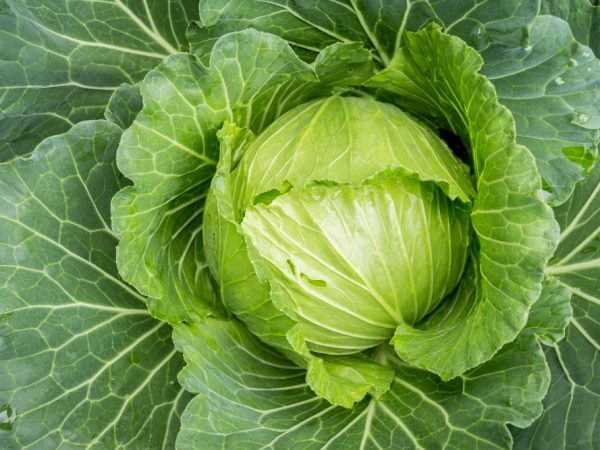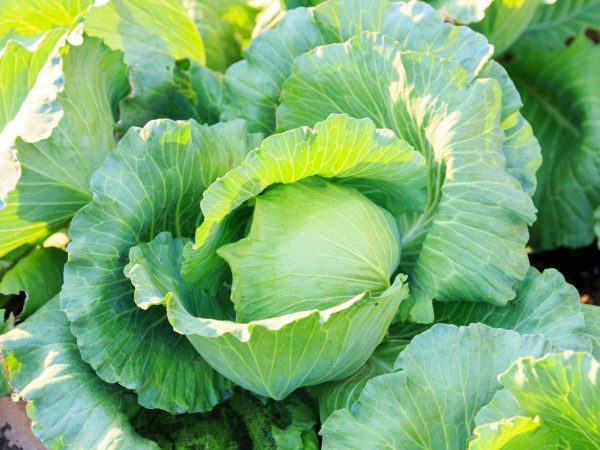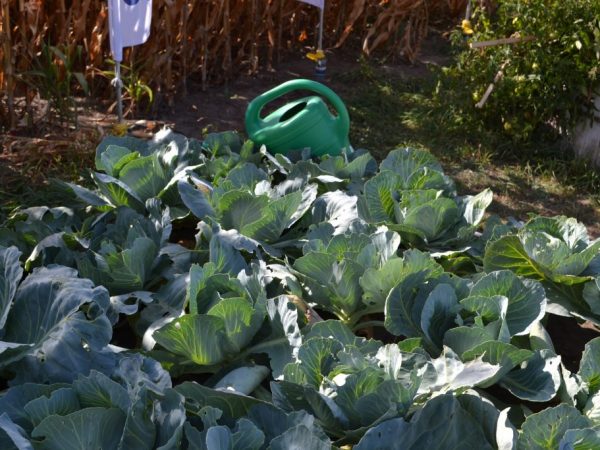Characteristics of cabbage variety Rinda f1
Among the many hybrid varieties, Rinda cabbage stands out. Prized for its crack resistance and delicious fruit.

Characteristics of cabbage variety Rinda f1
Characteristics of the variety
Rinda f1 cabbage is mid-season. It takes 120-130 days from germination to technical maturity. The period from planting seedlings in the soil to the moment of harvesting will take 80-90 days.
Vegetable culture is resistant to the following changes:
- exposure to pests;
- temperature difference;
- cracking and shooting;
- severe frosts, etc.
The disadvantages of Rinda cabbage are the demands of the seedlings for sunlight. Lack of light can negatively affect the growth and development of the shoots. An artificial increase in daylight hours with the help of backlighting will help to correct the situation. Another disadvantage is poor drought tolerance, so watering should be as timely and abundant as possible during the period of active head formation.
Description of heads of cabbage
According to the description, the plants are powerful. The leaf rosette is compact, semi-raised. The leaves are very juicy, tender and fleshy. They are thin in structure, but strong.
The main characteristic of heads of cabbage: average weight - about 4-6 kg, not subject to long-term storage. After 3-4 weeks, they begin to deteriorate and become unusable.
The stump is short. The spreading of the leaves is average, which allows the heads of cabbage to be planted next to each other.
Rindou cabbage is recommended to be eaten fresh. It makes a great ingredient in a light, dietary salad. Can be added to casseroles. Suitable for making soups, borscht, cabbage rolls.
White cabbage of this variety is also consumed with proper nutrition. It is low in calories, does not contain harmful components. It is often stewed or fermented.
Care

Caring for cabbage is not difficult
Rinda F1 white cabbage can be grown in 2 ways. The first is reckless or private. The second method is seedling.
Seedless planting method
The preferred planting time is spring after the frost has receded. First you need to choose the right seeds. After purchase, they must be checked for defects, traces of pests, etc. Rotten or damaged kernels are discarded immediately.
If it is impossible to immediately determine the quality of the seeds, they should be placed in a container with water and wait 5-6 minutes. Those that float are not suitable for landing. The settled ones can be safely used for disembarkation, but after drying and processing them.
A manganese solution is used for processing. For this, 1 g of potassium permanganate is dissolved in 100 ml of water. The same mixture can be used if it is necessary to disinfect the soil.
When sowing, a certain row spacing must be observed. This is 8-10 cm. The optimal distance between the seeds is 2-3 cm. The normal depth of the seeds is 2-5 cm.
5-7 seeds are placed in each prepared hole. After that, the hole is mulched. Horse humus or sawdust is used as mulch.
Disembarkation is carried out in a square-nested way.It is important to observe the proportions so that the size of the beds is 70 * 70 cm.
Seedling planting method
If the planting of Rinda f1 cabbage is carried out in seedlings, the ground is prepared in advance - in the fall. Organic fertilizers (wood ash, manure, bird droppings) are introduced and the soil is dug up.
Seedlings are grown in a warm room. This can be a room in an apartment or a greenhouse.
Description of this method:
- The seeds are treated in a saline solution. To do this, you need to dilute 30 g of salt in 1 liter of water. The seeds are kept in the solution for a maximum of 10 minutes, after which they are washed and dried.
- They are planted in separate containers. Disposable glasses, small pots, special containers are suitable.
- Planting depth - up to 2 cm.
- Before the first shoots appear, it is necessary to maintain a temperature of 20-22 ° C. After their germination, the optimal temperature regime is 8-10 ° C.
- 2 weeks after planting, the sprouts dive. This is done in order to improve the germination of seedlings.
- The sprouts are transplanted into open ground or into a greenhouse after 6-8 leaves appear. Before planting, they are watered abundantly.
Watering

Water your plants regularly
Rinda f1 white cabbage prefers moist soil. After sowing seeds or replanting seedlings, the plant should be watered 3-4 times a week. For 1 m2, you will need up to 10 liters of water (1 bucket).
As the vegetable crop grows, watering also increases to 15 liters. But the frequency of the procedure is reduced by 2 times and is reduced to 2 waterings per week.
Hilling
This procedure is necessary to strengthen the stem and the formation of large numbers of lateral roots. This will give the plant additional strength and have a positive effect on the level of yield.
Hilling is carried out twice a season. The first time is 15 days after transplanting. The second - 40 days after the first. Necessary for the correct formation of the plant.
Top dressing
When planting seeds, organic fertilizers are applied to the ground. The best among them are horse humus, rotted grass and wood ash. A solution of 200 g of ash is placed in each well, 2 tbsp. l. superphosphate and 1 tsp. urea. All components are diluted in 10 liters of water. For 1 m2, 3 liters of solution is enough.
Another feeding is carried out during the hardening of the seedlings. To do this, take:
- 1 tbsp. l. urea;
- 2 tbsp. l. potassium sulfate;
- 10 liters of water.
All components are mixed and allowed to brew. The infusion time is a day. Solution consumption - 300 ml per 1 sprout or 2 liters per 1 m2.
When the sprouts reach 20-25 cm, root top dressing is started. Make a liquid mullein solution. You will need 400 g of humus, 1 tsp. nitrophosphate, 1 tsp. wood ash. This is only enough for 1 hole.
Pests and diseases
Although Rinda f1 cabbage is resistant to pests, there are conditions under which it can be susceptible to disease. Most of them are associated with care errors.
| Name of the disease or pest | The nature of the defeat | Processing period | Control methods | Preventive measures |
| Powdery mildew or downy mildew | Appears on shoots in the form of gray and brown spots. As a result, the leaves curl, dry out and fall off. The growth of vegetable crops is suspended. There is a risk of getting small heads of cabbage. | Only when the first significant signs appear. | The best way is to sprinkle with Bordeaux mixture. For this variety, take a 1% solution. Dosage - 500 ml of liquid per 10 liters of water. | It is necessary to monitor the level of soil moisture. If stagnation of water becomes noticeable, stop for the duration of watering. |
| Blackleg | It affects the stem and leaves. The main manifestation is the formation of black spots resembling rot. May kill the entire plant. | Before and after landing. If the first symptoms have been identified. | Introduction of the drug "TMTD" into the soil. 50-60 g is enough for 1 m2. The second method is the preliminary treatment of seeds with the "Granosan" agent. For 100 g of seeds, take 0.5 g of the drug. | Planting only healthy seedlings, which must be hardened before planting in open ground. In the soil where the infected cabbage was grown, do not plant anything in the future. |
| Keela | These are white growths that prevent nutrients from reaching the plant's root system. As a result, the keel leads to the death of the heads of cabbage. | Before disembarkation and when clear signs of illness are found. | Digging up the entire plant with a piece of land and its complete destruction. | Seed treatment and soil disinfection before transplanting seedlings. |
Conclusion
Rinda f1 cabbage variety is intended for planting in any region. It is hygrophilous, mid-season and with juicy fruits. It is affected by diseases only as a result of improper care.


